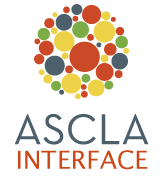by Sara White, Assistant Branch Manager & Youth Services Librarian
Seminole County Public Library (FL)
In 2013 I transferred to a new branch in my library system, and inherited the job of hosting a bimonthly Special Needs Storytime. I had never hosted a Special Needs Storytime before, but my library system’s philosophy was that it should be a “gateway” storytime: a safe place for families of children with special needs who might initially feel intimidated by the library. The hope was that by attending Special Needs Storytime, children would grow more comfortable with the storytime format, and that families would feel less nervous attending our other storytimes too.
I sought advice from other Youth Services Librarians in my system who had experience with Special Needs Storytimes. I reviewed my notes from the Special Education course I took for my teaching degree. I researched and watched webinars about storytimes for children with special needs. I was fairly certain I had prepared an engaging, structured, sensory-friendly storytime. I was completely ready to go with the flow and remain completely unfazed by any child’s outbursts or behavior.
What I was not expecting, however, was dismal attendance. Special Needs Storytime had been implemented in my system to meet a need at another branch; that branch’s Special Need Storytimes were popular and flourishing. My branch was the “Oh, we should offer this at another branch too” branch, and a regular following of attendees had not been cultivated in quite the same way.
Challenge accepted, I thought, and I began to consider how best to get the word out. I contacted all of the local organizations I could find that served populations with special needs, asking if they could forward my flyer to their e-mail lists or post it to their social media pages. Most of them were receptive, and agreed to help me promote the storytimes. I developed a list of contacts, and reached out to them the week before every Special Needs Storytime. My contacts continued to thank me and tell me they were forwarding my flyers.
Then came the reply from my local Autism Speaks in 2014, after I had sent out a Special Needs Storytime reminder e-mail. My contact at Autism Speaks asked if we might be able to promote their annual walk event. “And are you familiar with the Resource Fair at the walk?” my contact asked. “It’s a place where local organizations who serve the autism community can showcase themselves to our crowd of over 6,500.”

Musical puppet show at the Autism Speaks Walk
6,500 people? I was sold. I was going to have a library booth at that walk! I recruited some of our teen volunteers to supervise a craft table and do some basic puppeteering. One of our clerks came to preside over library card registration, e-mail list sign-up, and distributing library information (especially Special Needs Storytime flyers). My job was to catch the attention of passers-by with a guitar and a series of musical puppet shows.
Thus began a partnership between my library system and Autism Speaks. We had given away almost all of our Special Needs Storytime flyers by the end of that first walk, and over the next several months, attendance at my Special Needs Storytime improved significantly. I went from an average attendance of 4-5 in 2014 to an average attendance of 20 in 2015!
Since Autism Speaks had been generous enough to give us a booth at their walk, I wanted to find out more about their organizational goals and how we could help them. I met with a couple of my contacts in person, and we discussed their focus on autism awareness — educating parents on some of the common early signs of Autism Spectrum Disorder (ASD), and providing guidance and support to families affected by ASD. My contacts shared their official list of recommended books about autism with me, and I worked with our collection development team to purchase many of the titles we did not own. Autism Speaks also shared several resource documents with me that had been prepared by their staff — an ASD fact sheet, and information for parents who might be wondering if their child is showing early signs of ASD. I ensured that we were able to make these documents available at all of our branches.
Finally, my contacts at Autism Speaks reminded me that April was National Autism Awareness Month, the perfect time to create an Autism Awareness book display. Autism Speaks was simultaneously running a “Light It Up Blue” campaign, in which many landmarks and iconic buildings were shining blue lights in honor of families affected by autism. When I put together my book display, I draped blue twinkle-lights from the table to really catch the eye. After asking for help from my colleagues at other branches, similar displays went up at our other libraries in our system. Autism Speaks shared a photo of our book display on their Facebook page, promoting our library as we helped them promote National Autism Awareness Month.
I was thrilled to be back at the Autism Speaks walk in 2015 too. The goals of my library and of Autism Speaks overlap — we both want families to be educated and aware, and we both want to serve and support families affected by ASD. These overlaps gave us common ground, and allowed us to help each other better serve our community.
My final advice for anyone interested in establishing similar partnerships: Never underestimate the power of establishing contacts, even if they’re initially only e-mail contacts! You never know when they’ll suddenly think of you and the library, and how you might be able to work together to accomplish shared goals.
